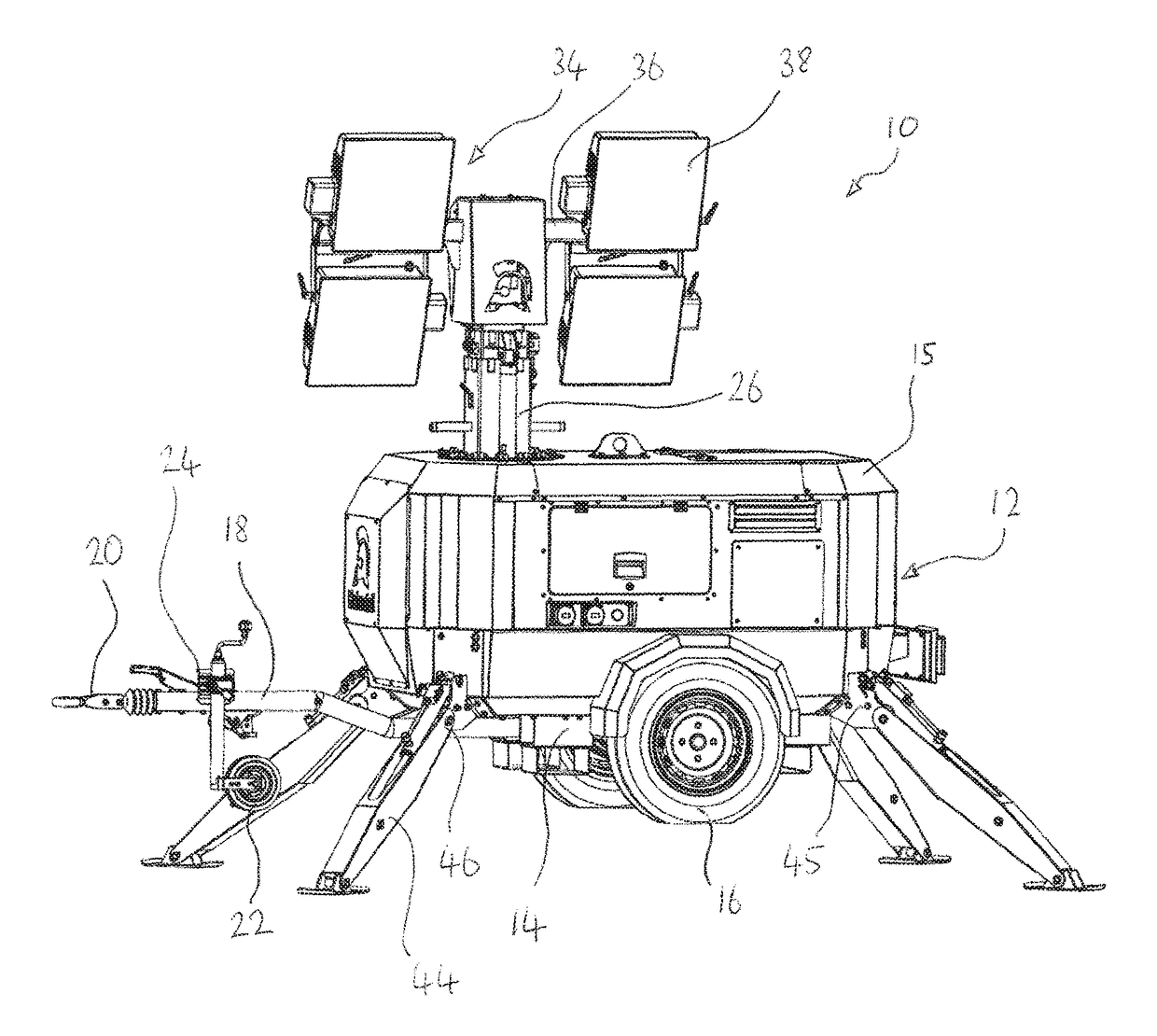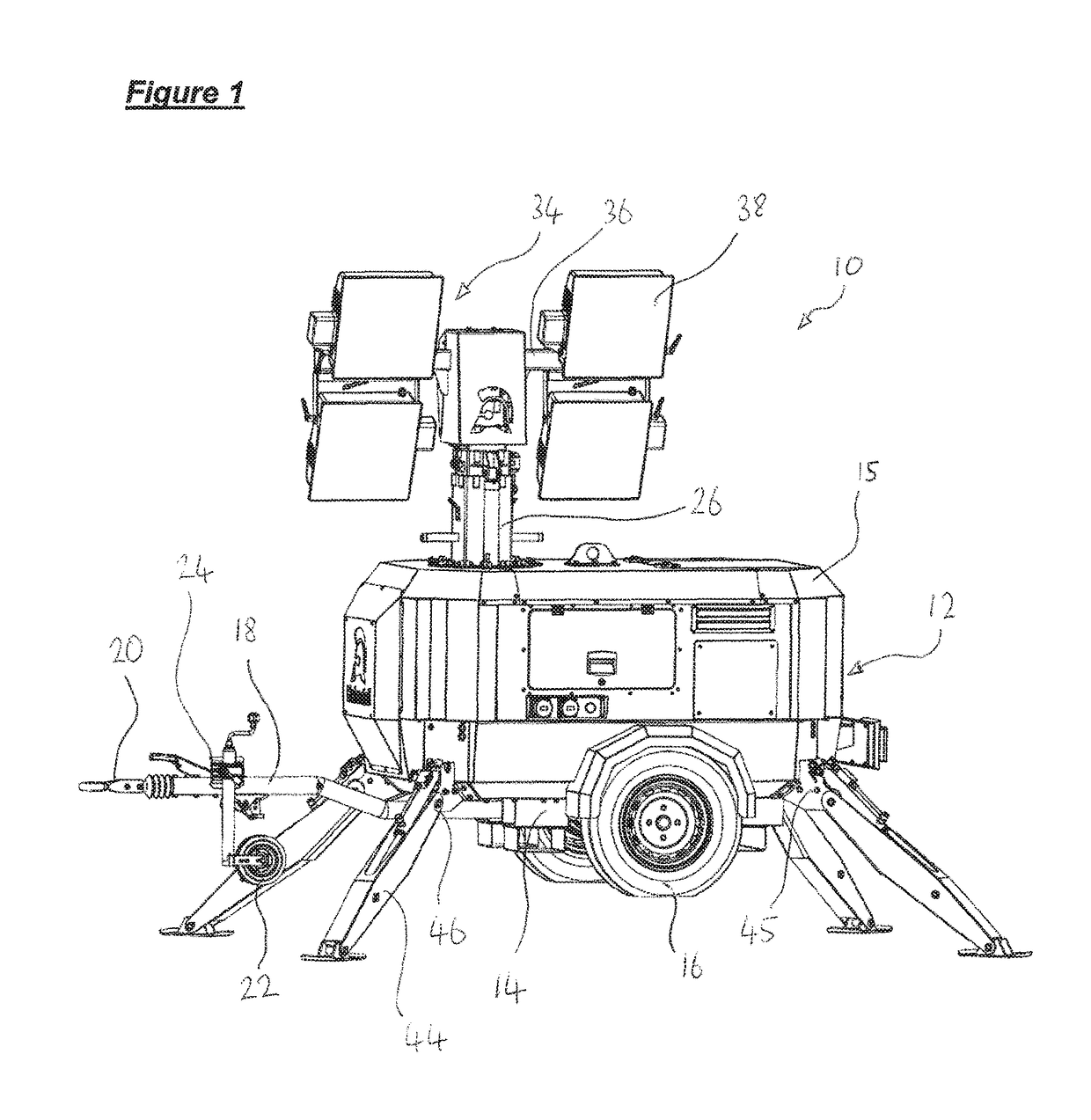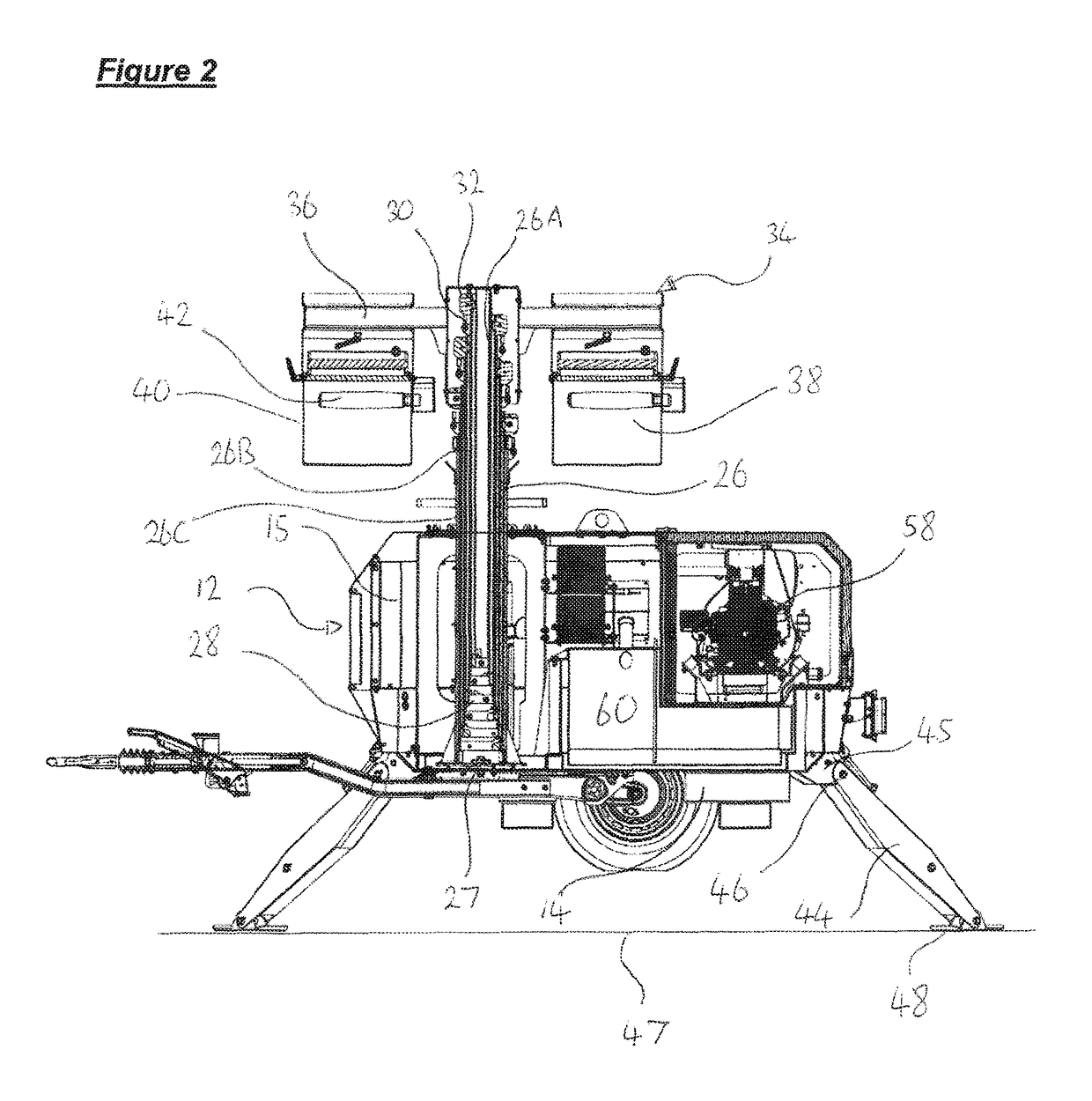Light tower
a technology of light towers and towers, applied in outdoor lighting, searchlight transportation, lighting applications, etc., can solve the problems of mobile light towers toppling, inherent safety risks, etc., and achieve the effect of reducing the risk of toppling, accurate prediction of the effect of the effect of falling, and more sensitive measurements
- Summary
- Abstract
- Description
- Claims
- Application Information
AI Technical Summary
Benefits of technology
Problems solved by technology
Method used
Image
Examples
Embodiment Construction
[0049]A mobile lighting tower unit 10 is shown in FIGS. 1 and 2 in a condition ready for use. The lighting tower unit 10 generally comprises a main body 12, which houses the power, actuation and control systems for the lighting tower. The main body 12 comprises a chassis 14 and a casing 15, providing a hollow interior in which the internal systems can be mounted.
[0050]A pair of wheels 16 are mounted to the main body 12, e.g. by an axle supported by the chassis so as to allow the lighting unit 10 to roll on its wheels. A tow arm 18 depends from the chassis 14 and allows for connection to a vehicle at a connector formation 20. A caster / wheel 22 is mounted to the tow arm 18 in a conventional manner and is provided with a manual break 24, although such features may optionally be omitted as necessary.
[0051]A lighting mast 26 is mounted within the main body 12 such that the mast 26 is upstanding from the chassis and / or casing 15. The lower end of the mast 26 is typically mounted to the ch...
PUM
 Login to View More
Login to View More Abstract
Description
Claims
Application Information
 Login to View More
Login to View More - R&D
- Intellectual Property
- Life Sciences
- Materials
- Tech Scout
- Unparalleled Data Quality
- Higher Quality Content
- 60% Fewer Hallucinations
Browse by: Latest US Patents, China's latest patents, Technical Efficacy Thesaurus, Application Domain, Technology Topic, Popular Technical Reports.
© 2025 PatSnap. All rights reserved.Legal|Privacy policy|Modern Slavery Act Transparency Statement|Sitemap|About US| Contact US: help@patsnap.com



